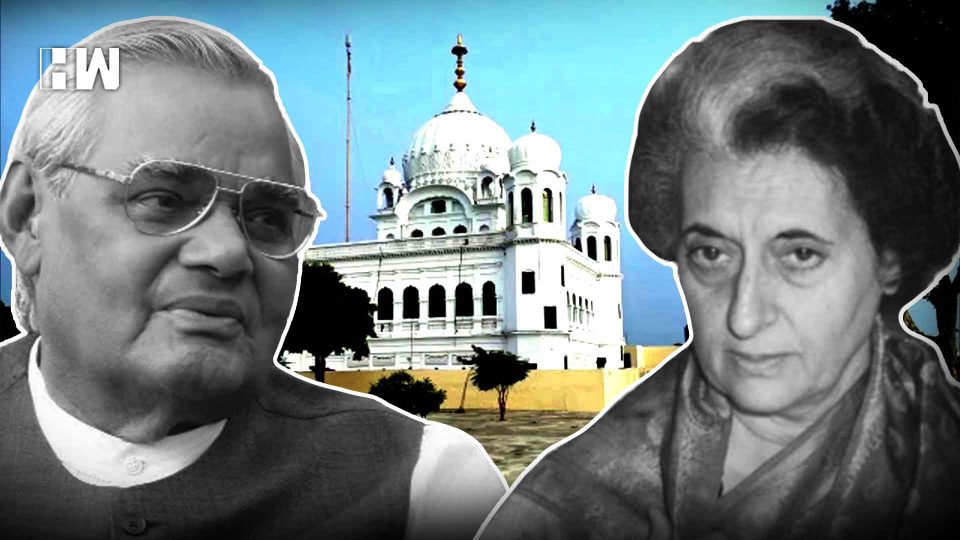For many Sikh devotees on the Indian side, Kartarpur corridor had been in eyesight but still like a distant dream for 70 years.
“Jo bole so Nihaal, Sat Shri Akal”, the chants reverberated the Attari-Wagah border on Wednesday as hundreds of Sikh pilgrims marched towards the holy shrine of Kartarpur. It was the first time since the partition that Sikhs on the Indian side of the border could walk up to the Kartarpur Sahib Gurudwara in Pakistan located just 4 km away from the Dera Nanak Sahib. A 65-year old Sikh man from Fatehgarh Choorian who was among the first few to cross the border and visit the shrine was smiles talking about the historic event. “I am happy that Kartarpur corridor is finally a reality,” he said exuding the excitement.
For many Sikhs like him, Kartarpur shrine had been in eyesight but still like a distant dream for 70 years. On Wednesday, the wait finally came to a positive end.
What is Kartarpur Sahib?
For Sikhs across the world, the Kartarpur Sahib gurudwara holds huge significance. It is the place where Guru Nanak after a long pilgrimage of almost three decades finally decided to settle. It is believed that Guru Nanak spent his last years in Kartarpur farming and spreading the message of peace. He lived here for 17 years and before his death, appointed his disciple Bhai Lehna (Guru Angad) as the next guru. In 1947, India was divided into two and the Kartarpur Sahib gurudwara went to the Pakistan side of the border. Currently, it is situated in near the city of Narowal alongside the Attari-Wagah border.

The main complex of Kartarpur Sahib has a grave and Samadhi of Guru Nanak. The folktale behind it goes like this:
After the death of Guru Nanak, an argument sparked between his Hindu and Muslim devotees over the funeral rites. The Hindus wanted to cremate him while the Muslims wanted a burial. It was almost night when both the arguing group decided that the matter should be resolved the next day. However, when they woke up the next day, they found a pile of flowers lying at the place where the body was. Not reaching a consensus, they divided the flowers among the two groups. While the Muslims buried them, Hindus cremated them. Thus, the Kartarpur Sahib has a grave and a samadhi.

The pilgrimage begins at the Dera Baba Nanak in Gurdaspur in Punjab. Situated only 1 km from India-Pakistan border, Kartarpur Sahib can be seen from the Border with naked eyes at a distance of about 4-5 km. Since the partition pilgrims used binoculars for Darshan.
The Sikh pilgrims separated from their holiest site by the border had been a sore spot. But why did the issue take so long for two neighbouring nations to solve?
From Indira Gandhi to Atal Bihari Vajpayee:
The Kartarpur corridor which was officially announced by the Pakistan premier Imran Khan almost a week ago was first proposed by the former Prime Minister Atal Bihari Vajpayee. He had ideated the corridor during the historic 1999 Delhi to Lahore bus diplomacy between the two nations. Pakistan too had agreed to allow Sikh pilgrims from India to visit the shrine visa-free (and without a passport) by constructing a bridge from the India side of the border to the shrine.

However, the thaw between the two countries proved to be short-lived. The hostilities along the border increased and eventually led to Kargil war. These developments put an end to the talks. Though, the earliest reference to the Kartarpur corridor is found during Vajpayee’s Lahore trip for the peace initiative, it was in 1969 that the issue had first drawn the attention of the Indian government.
The year 1969 marked the 500th birth anniversary of Guru Nanak. During the celebrations, the then Prime Minister Indira Gandhi promised the Punjab government that land-swap would be done with Pakistan for accessing the Kartarpur Sahib. Indira Gandhi said the Centre would approach the Pakistan Government for the exchange of Kartarpur Sahib with an adjoining Indian area. She also gave an assurance on granting free visas for visitors to Nankana Sahib on the Indian side of the border.
However, the assurance faded into oblivion after the Indo-Pak war in the subsequent year following the creation of Bangladesh.

The two times, when the access to Kartarpur Sahib actually came into consideration, the countries saw derailed relationship with a streak of violence breaking on the border.
On Wednesday, Pakistan PM Imran Khan furthering the message of the peace said, “If you one step forward, we will take two.” Before that Indian Prime Minister Narendra Modi too backed the initiative. He even expressed the possibility that the corridor could be the “Berlin Wall” moment for India and Pakistan. “Who would have thought that Berlin wall can be destroyed? With the blessings of Guru Nanak, even Kartarpur corridor can be a medium to join people from across the border,” Modi said.

While Union Minister Harsimrat Kaur Badal at the Kartarpur corridor launch ceremony reiterated PM Modi’s message, external affairs minister added a prompt reminder back home that the corridor won’t be a sole consideration in resuming the talks between the two countries. Some also fear the Khalistani threat returning to Punjab with the proposed corridor.
Whether the corridor becomes a harbinger in bringing the derailed Indo-Pak talks back on track not is for the two governments to decide. But, one thing is for sure, the Kartarpur corridor presents a rare example where religion poses the possibility to unite two divided countries.
As an independent media platform, we do not take advertisements from governments and corporate houses. It is you, our readers, who have supported us on our journey to do honest and unbiased journalism. Please contribute, so that we can continue to do the same in future.

